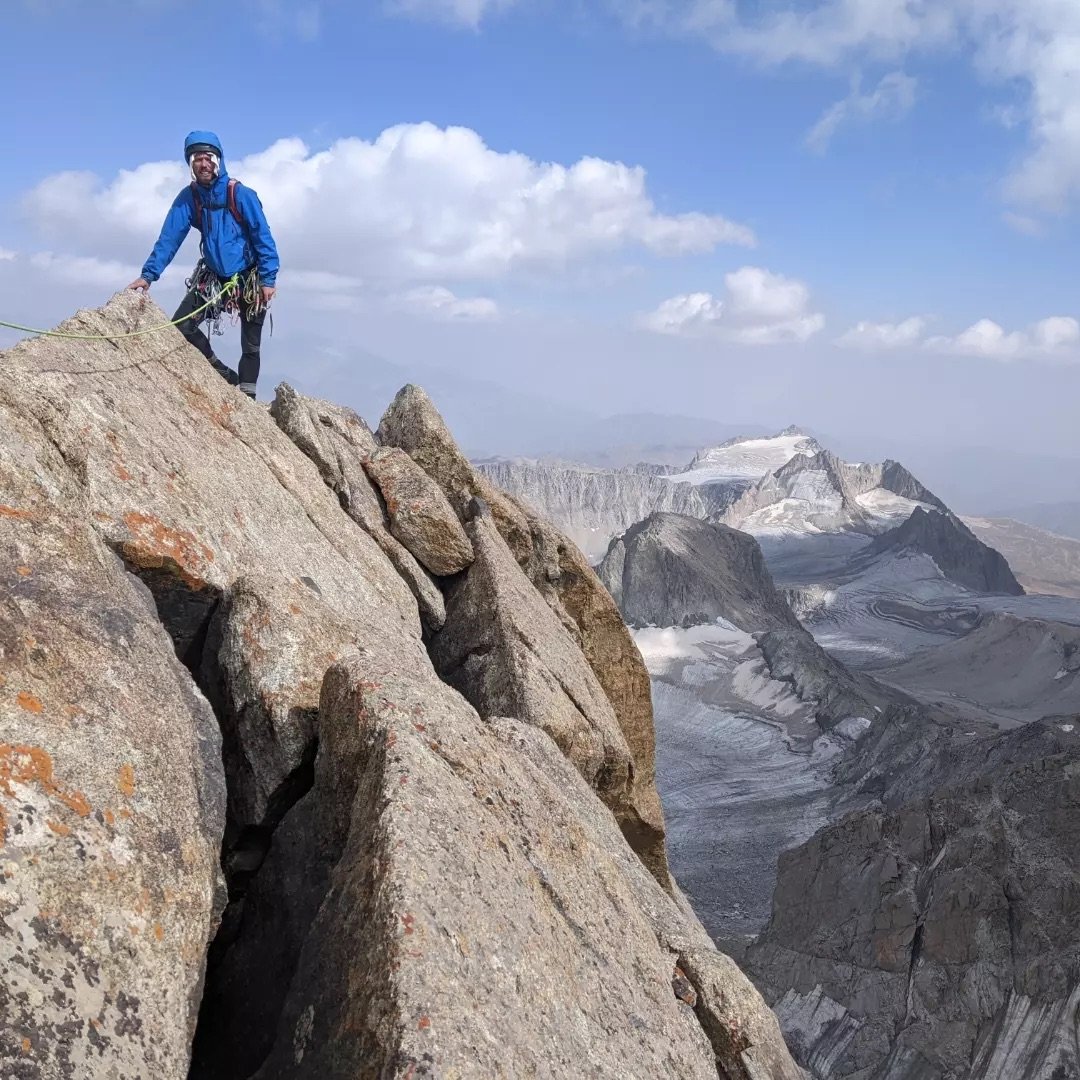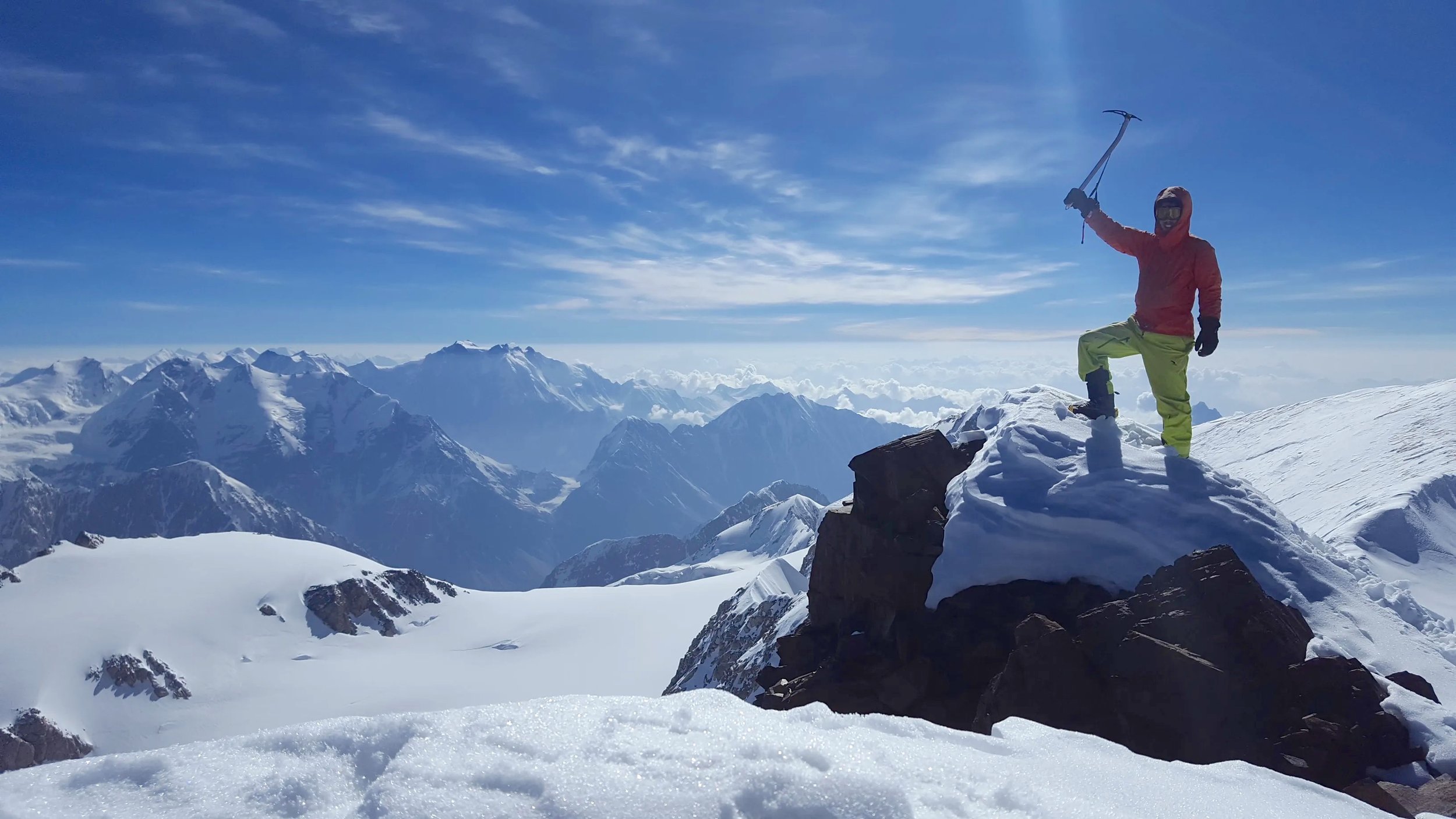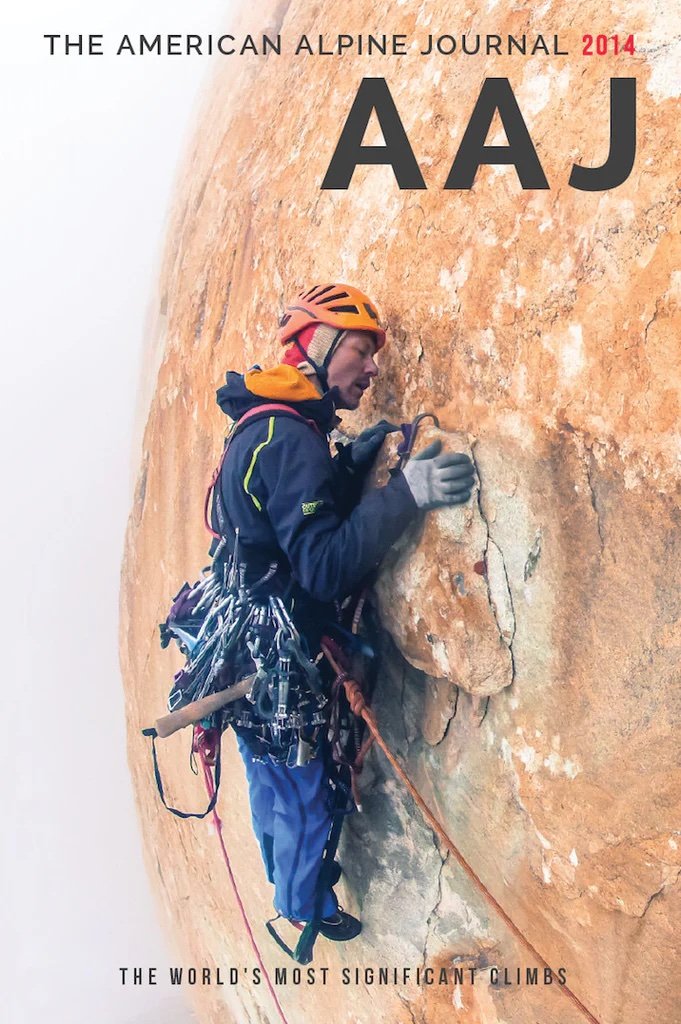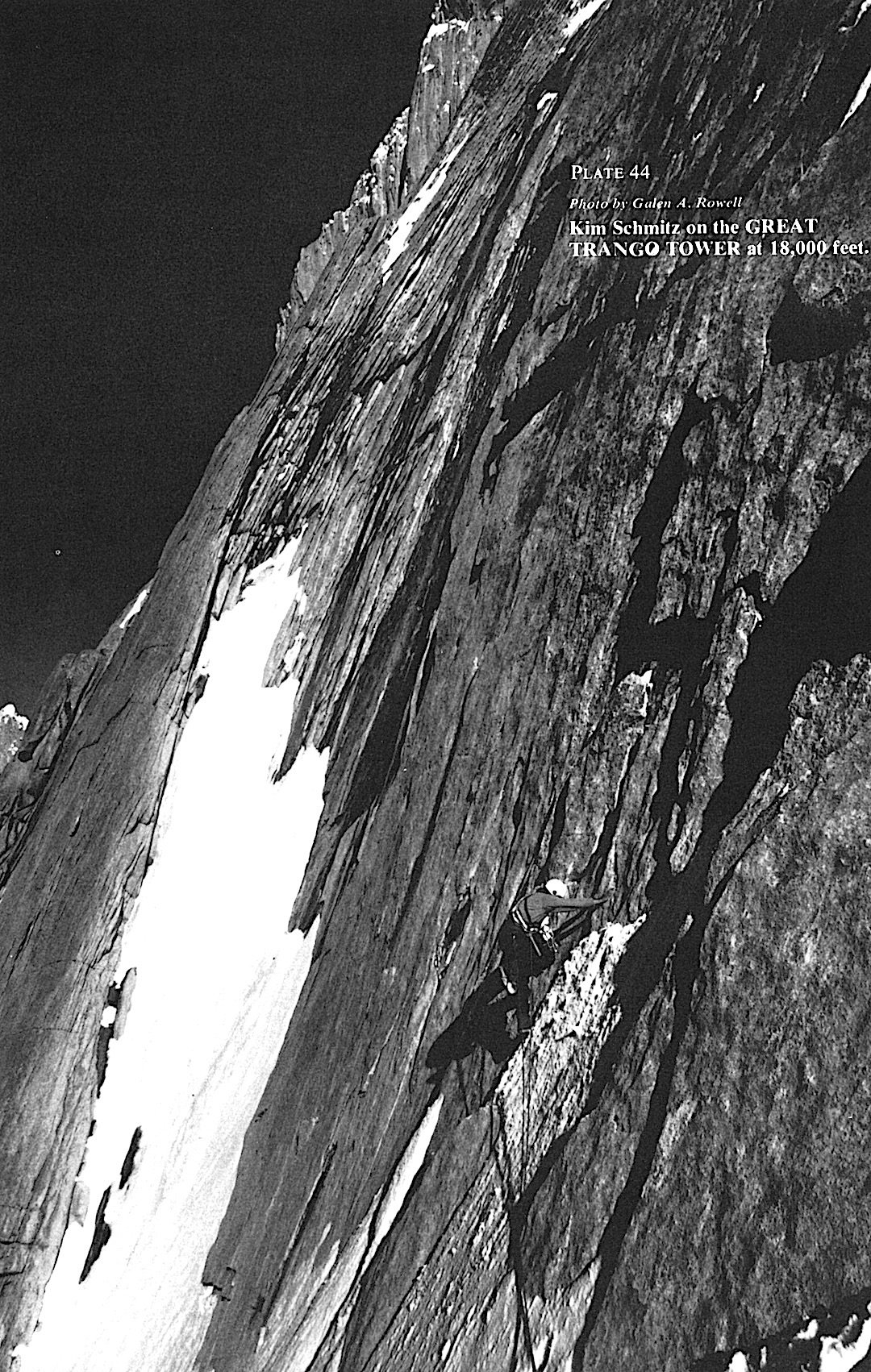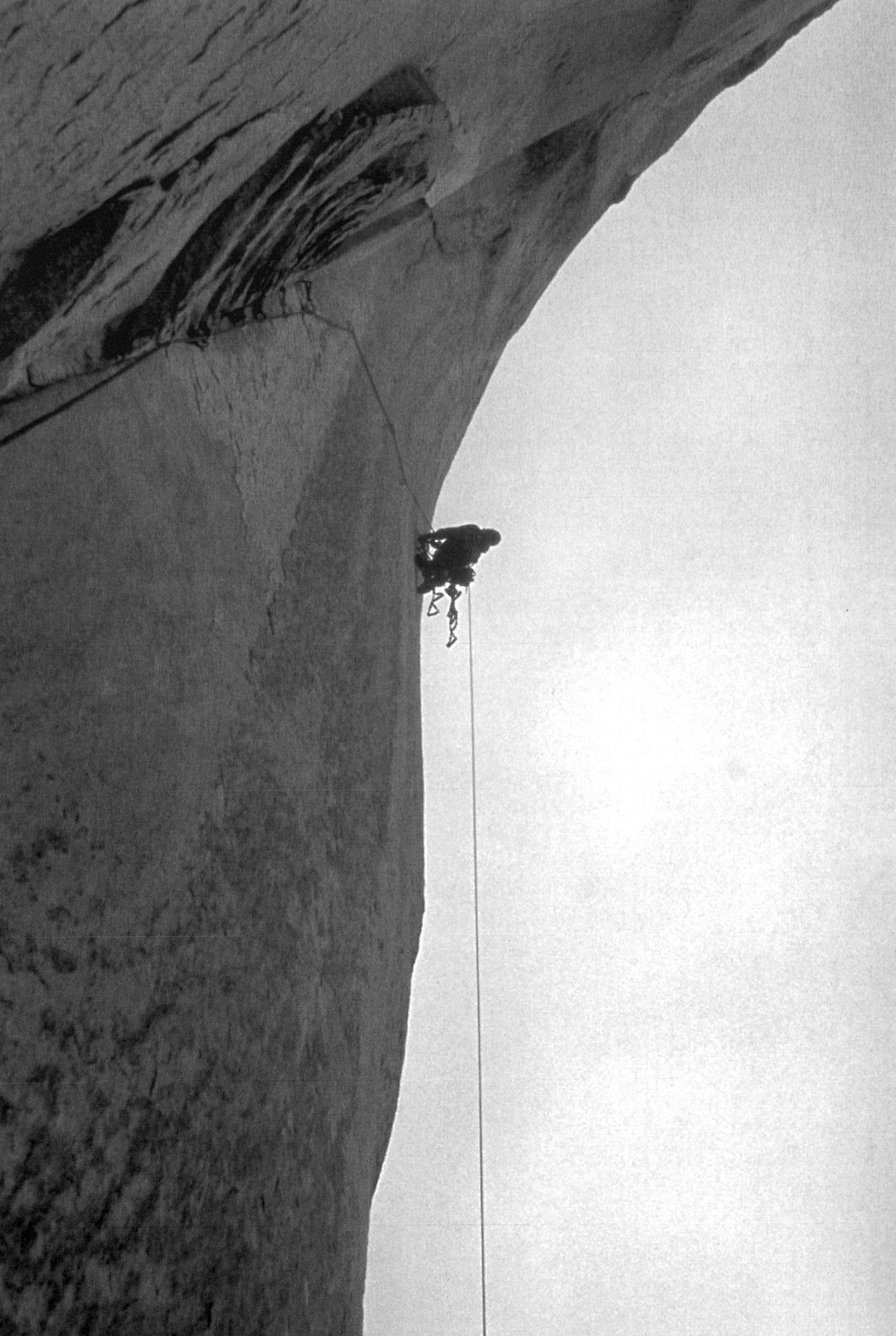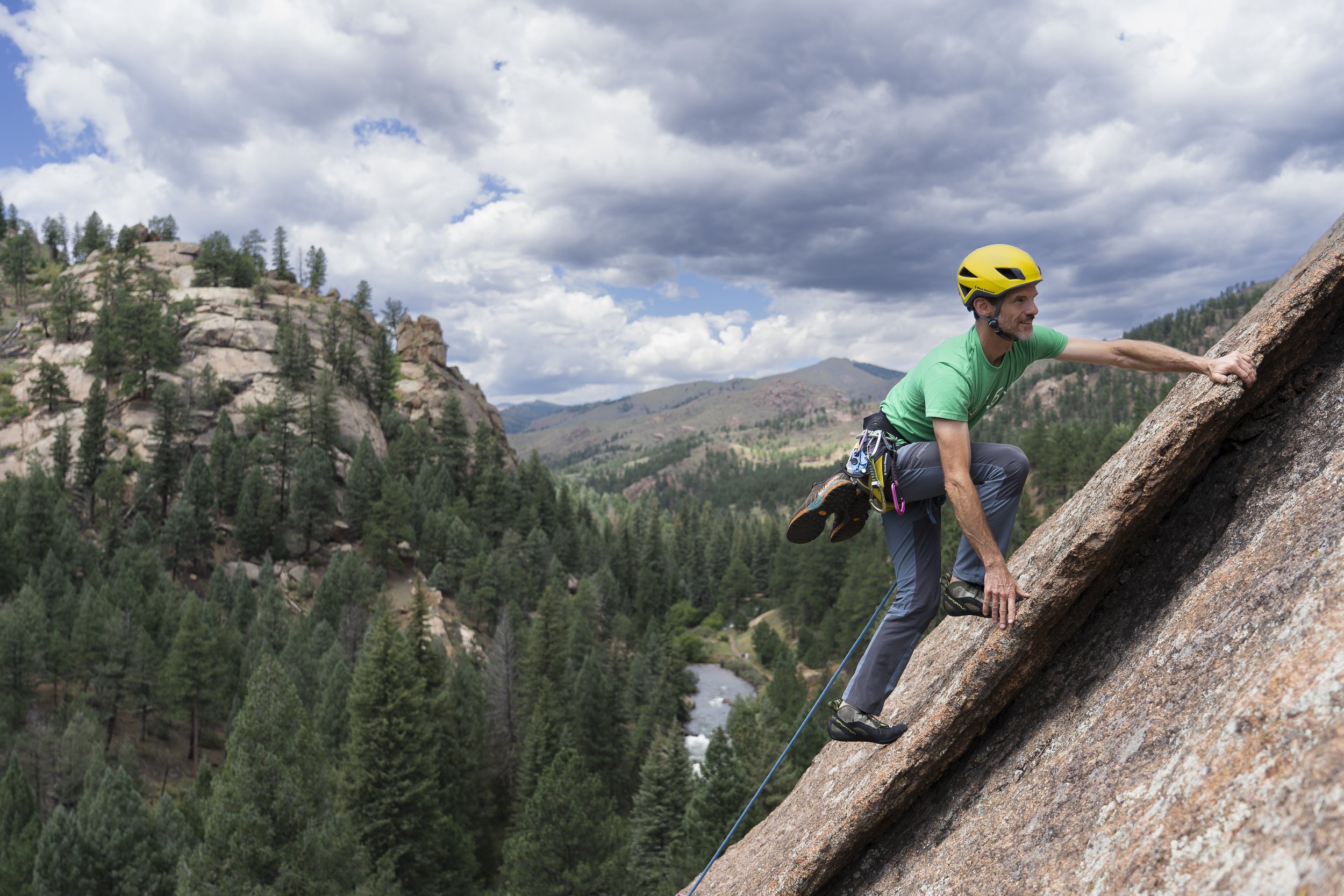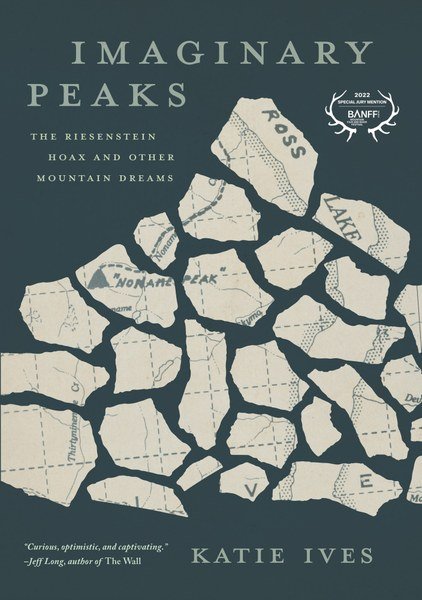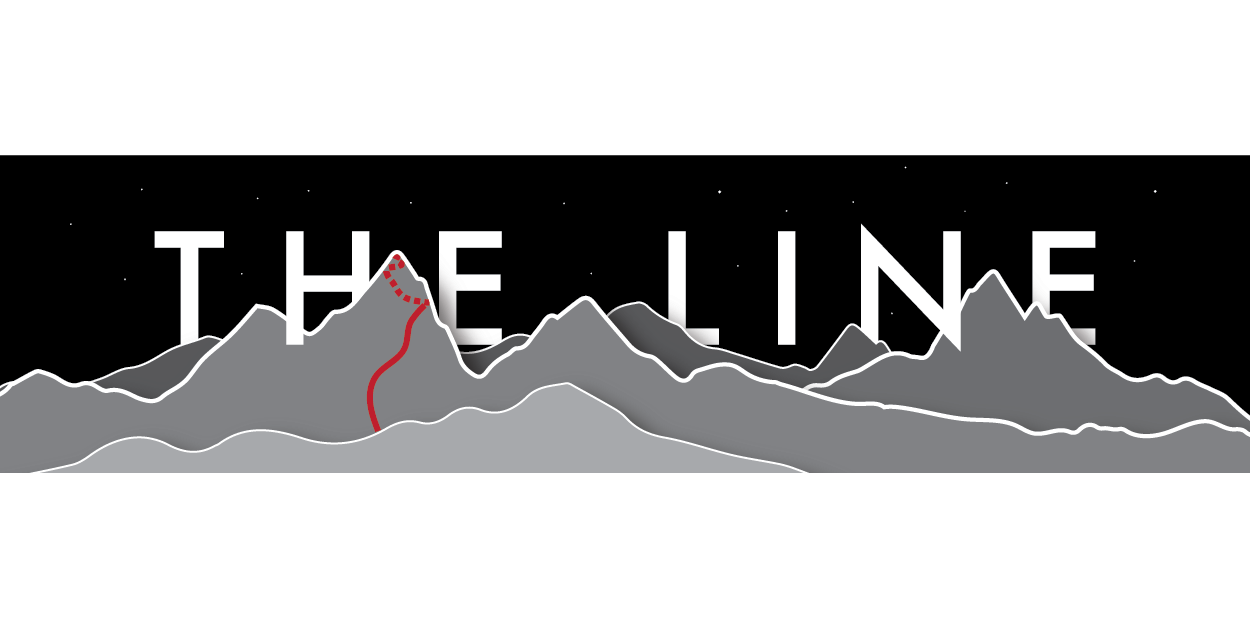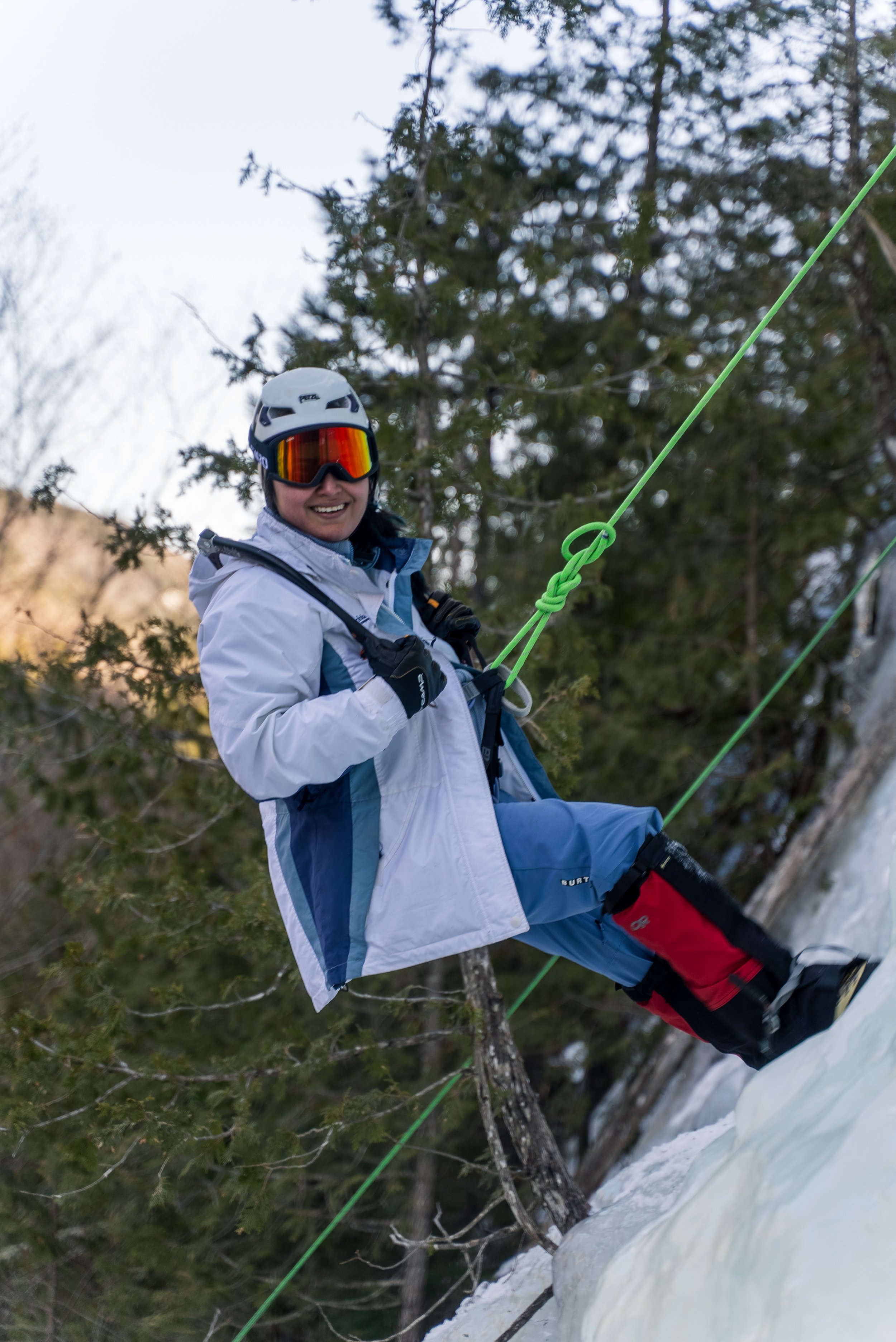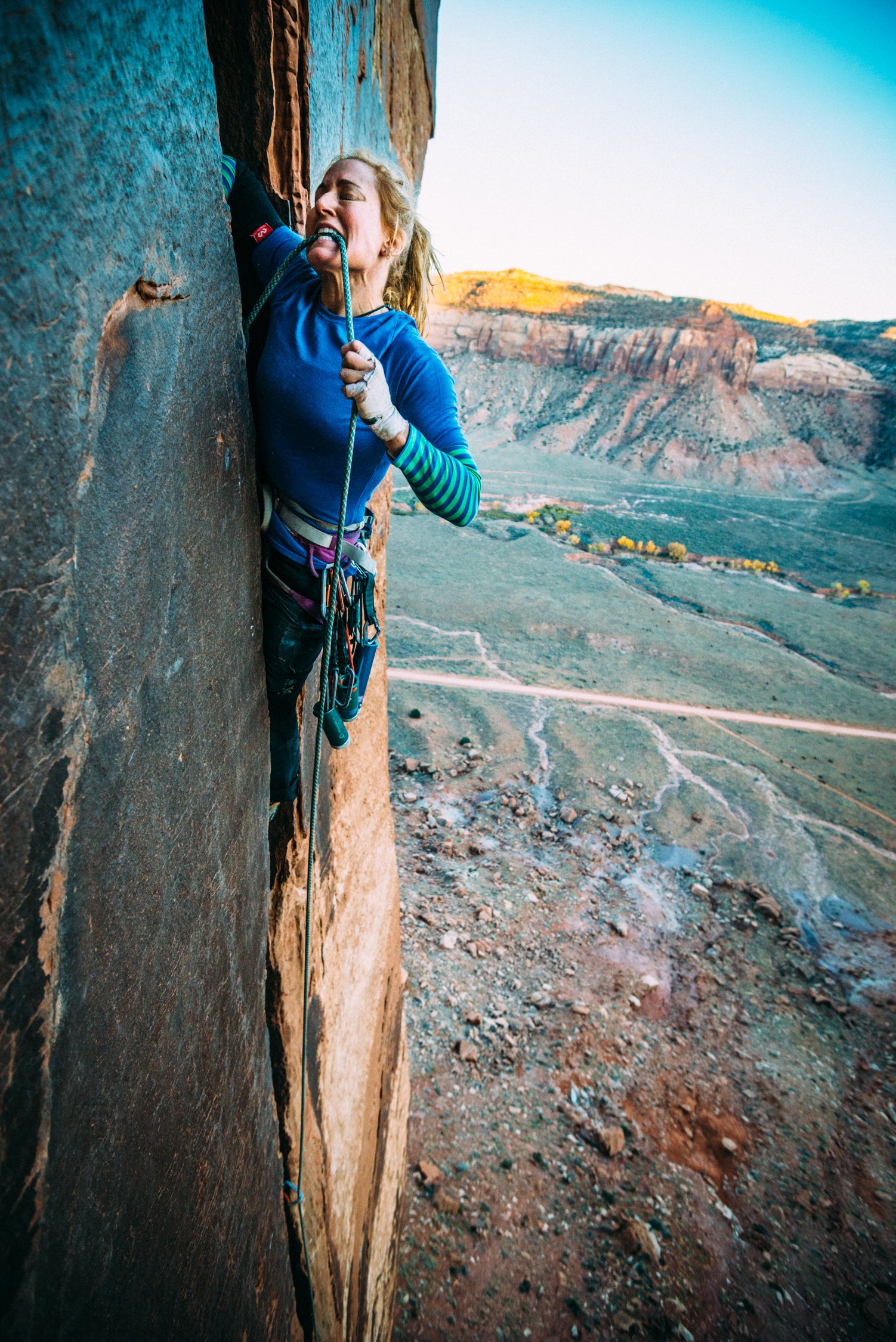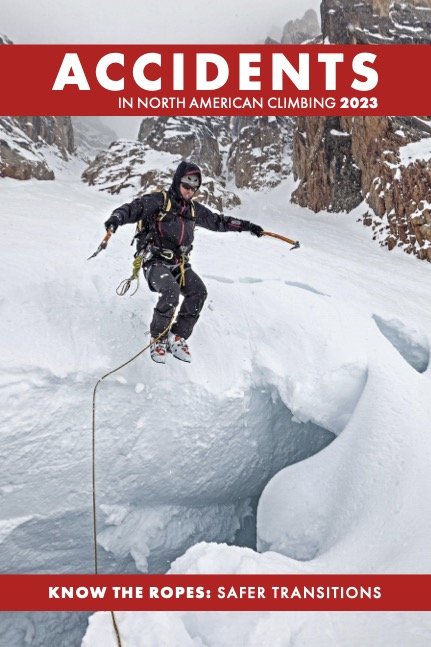Mark Westman has been climbing in the Alaska Range for nearly three decades and was a Denali Mountaineering Ranger for ten years. He has attempted Mt. Russell, on the southwest edge of Denali National Park, three times by three different routes over 27 years. The third time was the charm, as he and Sam Hennessey raced to the summit in a single day in late April. It was only the ninth ascent of the 11,670-foot peak, and Westman believes the line they followed may be the most reliable way to reach this elusive summit.
Sam Hennessey scales the rime wall just below the summit of Mt. Russell. Photo by Mark Westman.
Mt. Russell, East Face and South Ridge
At 9:45 a.m. on April 27, Paul Roderick dropped Sam Hennessey and me on the upper Dall Glacier, directly beneath the nearly 6,000-foot-tall east face of Mt. Russell—our objective.
We had in mind a rapid round trip. After quickly setting up a tent to stash food and bivouac gear, we departed half an hour after landing with light packs. We started up the left side of the east face, following the same line that Sam had climbed the previous spring with Courtney Kitchen and Lisa Van Sciver. On that attempt, they carried skis with the hope of descending off the summit. After 3,600 feet of snow and ice slopes, they reached the south ridge, which they found scoured down to unskiable hard ice. They retreated and skied back down to the Dall Glacier.
The route Sam and I followed on the east face steepened to 50° at about mid-height, and the snow we had been booting up gave way to sustained hard névé and occasional ice—much icier conditions than what Sam and partners had found at the same spot in 2023. We continued to a flat area at 9,600 feet, near the base of the upper south ridge of the mountain. Until this point, we had climbed unroped for most of the way.
The line of the Hennessey-Westman Route on the east face and south ridge of Mt. Russell. The first ascent (1962) reached the south ridge from the far side of the mountain. The direct south face and south ridge (2017) is at left, and the original east face (1989) and northeast ridge (1972) are on the right. Photo by Mark Westman.
The upper south ridge was the route followed by Mt. Russell’s first ascent team in 1962 (see AAJ 1963). They accessed it from the west side via an airplane landing on the Chedotlothna Glacier (which is no longer feasible because of glacial recession). This section of ridge was repeated by Dana Drummond and Freddie Wilkinson in 2017 after they pioneered a new route up the direct south face and south ridge of Russell (5,000’, AK Grade 4; see AAJ 2018).
A moderate section of the upper south ridge of Russell. Photo by Mark Westman.
From where we intersected the ridge, there were several tricky sections of traversing across 50° ice and knife-edge ridges. We used the rope for these parts, then continued unroped for several hundred feet, easily avoiding numerous crevasses. Just beneath the summit, we reached a near-vertical wall of rime ice, surrounded by fantastically rimed gargoyle formations that spoke to the ferocious winds that typically buffet this mountain. We belayed the short bulge of rime and minutes later became only the ninth team to reach the summit, just seven hours after leaving our landing site.
Nomenclature
The peak known today as Mt. Russell appears to have been called Todzolno' Hwdighelo' (literally “river mountain”) in the Upper Kuskokwim Athabascan language. This is according to a National Park Service–sponsored study of Indigenous place names written by James Kari, professor emeritus of linguistics at the University of Alaska. Today’s Mt. Russell was named for geologist Israel Cook Russell—one of founding members of the AAC. The California 14er Mt. Russell is also named for him.
There wasn’t a cloud in any direction and not a breath of wind. I had made storm-plagued attempts on Russell in two different decades, and there were many other seasons where I had partners and dates lined up but never left Talkeetna due to poor weather. It was truly gratifying to reach the top of this elusive summit.
Sam and I descended to the landing site in just four hours, making for an 11-hour round-trip climb and the mountain’s first one-day ascent. Paul picked us up the following morning.
While all of the terrain we followed had been climbed previously, the east face and south ridge had not been linked as a singular summit route. Having attempted the now very broken northeast ridge in 1997, and having climbed most of the Wilkinson-Drummond route in 2019, I feel confident the Hennessey-Westman (5,700’, UIAA V with 50° ice and 80°+ rime ice) is the fastest and most straightforward way to the summit of Mt. Russell. There is a perfectly flat bivouac site on the south ridge at approximately 9,600 feet, albeit very exposed to the wind. While the technical difficulties are modest, this route is sustained, serious, and committing.
Alaska Range Top Five
We asked Mark Westman, one of the most experienced modern climbers in Alaska, to name his five most memorable or personally important Alaska Range climbs. In chronological order, they are:
Mark Westman on the Infinite Spur of Sultana (Mt. Foraker) in 2001. Photo by Joe Puryear.
South Buttress (1954 Route), Denali, with the late Joe Puryear, April-May 1996. Significant for being my first time to reach the top of Denali, but also for being a month-long true wilderness adventure in total isolation on the mountain. It cemented my partnership with Joe for much bigger things that lay ahead.
Infinite Spur, Mt. Foraker, with Joe Puryear, June 2001. One of the most committing routes I ever did, and also the finest achievement I had with Joe after a decade-long climbing partnership that began when we were neophytes.
South Ridge of Mt. Hunter, with Forrest Murphy, June 2003. [It] had every sort of challenge one could expect in Alaska Range alpine climbing: difficult mixed and ice climbing, a serious icefall, a traverse of a high and massive mountain, extreme commitment, and, most of all, one of Alaska's most legendary corniced and knife-edged ridges (The Happy Cowboy), one of the most engaging mental exercises I have ever faced.
The Warrior’s Way, Mt. Grosvenor, with Eamonn Walsh, April 2006. How often does one get to make the very first ascent of a big face (the direct east face) on the west side of the Ruth Gorge? This was the last of three new routes we did on the peak (which were also the second, third, and fourth overall ascents), and it takes a king line straight up the middle of the face. Best of all, although run-out in places, it is relatively safe, and although technical, it goes at an approachable grade and has been repeated twice.
Denali Diamond, Denali, with Colin Haley, June 2007. This was a huge step up technically and stylistically for me, marking a multi-year transition from slower and heavier climbing to contemporary lighter and faster alpine-style techniques, with much credit to Colin for his youthful embrace of these methods. Managing this 8,000-foot-plus face in just 45 hours was a step well beyond what I would have imagined possible for myself many years earlier, and it was one of those rare climbs where literally everything goes as perfectly as you planned it back home in the living room.
A Place Among Giants
Lisa Roderick, Westman’s wife (and pilot Paul Roderick’s sister), was the base camp manager on the Kahiltna Glacier for more than two decades. (She attempted Russell with Westman and the late Joe Puryear in the late ’90s.) In early November, her memoir of nearly four years of cumulative time spent on the glacier, shepherding planes and climbers in and out of Denali base camp, will be published: A Place Among Giants: 22 Seasons at Denali Basecamp.
The Line is the newsletter of the American Alpine Journal (AAJ), emailed to more than 80,000 climbers each month. Find the archive of past editions here. Interested in supporting this publication? Contact Heidi McDowell for opportunities. Got a potential story for the AAJ? Email us: [email protected].












